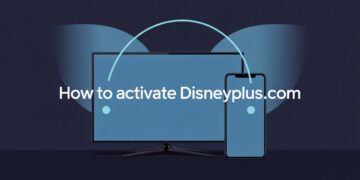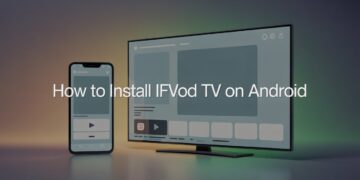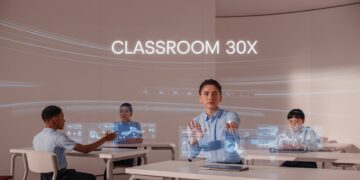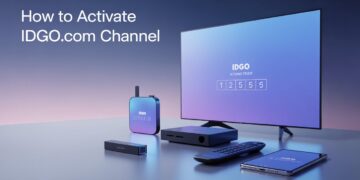In the digital age, QR codes have become ubiquitous, facilitating seamless interactions between the physical and digital worlds. These matrix barcodes store information that can be quickly accessed using a smartphone camera, leading to their increasing prevalence in everyday life. Despite the convenience they offer, it’s essential to recognize the challenges faced by individuals with disabilities in accessing information. This article delves into the innovative use of QR codes to bridge accessibility gaps and empower people with disabilities to navigate the world more independently with codes from ME-QR. Additionally, the availability of tools that make QR code free has democratized accessibility solutions, allowing for wider implementation across various sectors.
Use cases for different disabilities:
QR codes are rapidly transforming the way we interact with information, but their impact extends far beyond convenience. For individuals with disabilities, these ubiquitous squares hold the potential to unlock greater independence, participation, and access to crucial information. Let’s explore how QR codes can become powerful tools for inclusivity across different disability groups:
- Vision: Imagine navigating a museum without relying solely on visual cues. QR codes strategically placed near exhibits can offer audio descriptions, transforming the experience for visitors with visual impairments. Similarly, scanning a code on a product package can instantly translate text-heavy labels into audible information, empowering informed choices. Beyond physical spaces, menus, signage, and even educational materials can become accessible through text-to-speech activated by QR codes, breaking down communication barriers.
- Hearing: The arts come alive in a new way when a scanned QR code provides video captions or transcripts, ensuring equal access to cultural experiences for individuals with hearing disabilities. QR codes can also connect museum patrons to sign language interpreters in real-time, fostering meaningful engagement with exhibits and presentations. Similarly, educational videos and lectures become inclusive when paired with QR-linked transcripts, guaranteeing no student falls behind.
- Motor: Filling out forms, typing lengthy information, or operating smart home devices can be challenging for individuals with motor limitations. QR codes offer a solution by pre-populating data fields, reducing the need for manual input. Imagine controlling lights, adjusting thermostats, or even placing food orders via voice commands triggered by scanning a QR code, all from the comfort of an accessible interface. These seemingly small interactions translate into significant gains in independence and convenience.
- Cognitive: Individuals with cognitive disabilities often benefit from information presented in clear, concise formats. QR codes can act as gateways to bite-sized chunks of knowledge, delivered in multiple languages and tailored to different comprehension levels. Imagine navigating unfamiliar environments with step-by-step instructions accessed through QR codes, or engaging in educational games enriched with QR-linked support materials. By simplifying information access and offering additional resources, QR codes can create a more inclusive learning and exploration experience.
QR codes represent a powerful tool for inclusivity, waiting to be unlocked. By embracing their potential and implementing them thoughtfully, we can create a world where information is accessible to all, regardless of limitations. Let’s bridge the gap and empower individuals with disabilities to engage fully with the world around them, one scan at a time.
Benefits and limitations of QR code
The integration of QR codes into accessibility initiatives holds immense promise for fostering independence and social inclusion for individuals with disabilities. This technology offers a convenient and contactless way to access information, navigate physical spaces, and connect with essential services. Imagine visually impaired individuals receiving audio descriptions of museum exhibits through a simple QR scan, or people with mobility limitations ordering food from restaurants without physically approaching a counter. Such scenarios paint a brighter picture of a more accessible world, empowered by the versatility of QR codes.
However, it’s essential to acknowledge the potential limitations that could hinder the effectiveness of this approach. Technology access itself can be a hurdle, as not everyone possesses a smartphone or the necessary assistive technologies to scan and interpret QR codes. Additionally, digital literacy plays a crucial role, and individuals lacking familiarity with these technologies might struggle to utilize them effectively. Furthermore, the ever-present digital divide widens the accessibility gap, leaving certain segments of the disabled community at a disadvantage.
Therefore, it’s paramount to remember that QR codes, while valuable, are not a one-size-fits-all solution. Human assistance remains indispensable, ensuring that individuals who face technological barriers or require personalized support are not left behind. Complementary accessibility solutions, such as tactile signage and audio announcements, should continue to play a vital role in creating a truly inclusive environment.
QR codes potential in enhancing accessibility
In conclusion, the potential of QR codes to enhance accessibility for people with disabilities is vast and transformative. By leveraging QR codes creatively, we can create a more inclusive and accommodating environment. It is paramount to encourage wider adoption and development of inclusive QR code practices, emphasizing the importance of digital accessibility in today’s interconnected world. Organizations and individuals alike should embrace this technology and actively contribute to promoting a more accessible and inclusive digital landscape.









